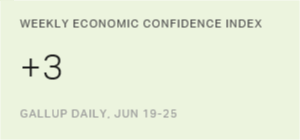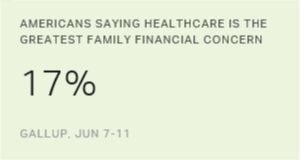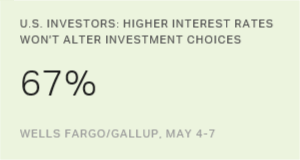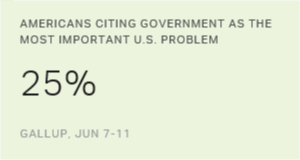Story Highlights
- Gallup's U.S. Economic Confidence Index at +3 for the second week in a row
- Index is positive for 32nd consecutive week but down from +16 in March
- More Americans continue to see economy as getting worse rather than better
WASHINGTON, D.C. -- U.S. adults' views about the economy were unchanged last week, with Gallup's U.S. Economic Confidence Index averaging +3 for the second week in a row. After reaching several post-recession highs earlier this year, the index has been quite stable since May, with weekly averages between +2 and +4.

From 2008 -- when Gallup began tracking economic confidence on a daily basis -- through most of 2016, Americans' assessments of the economy were routinely negative, although they became less negative over time. However, last year's presidential election proved to be an inflection point for economic confidence. The index's weekly average crossed into positive territory the week after the election -- one of only a handful of positive readings since 2008. The index has remained consistently positive since -- a feat not previously achieved over the Gallup Daily trend.
Last week marked the 32nd straight week the index has been above zero, meaning that many Americans -- Republicans above all -- continue to feel fundamentally different about the economy now than they did before the election. Still, economic confidence has ebbed and flowed throughout the first half of 2017, with the measure registering an eight-year high of +14 the week after Donald Trump was inaugurated as president and surpassing this in early March with a +16 reading.
But in subsequent months, confidence has declined -- largely due to worsening attitudes among Democrats. Since May, however, attitudes have largely stabilized, with weekly averages of the index remaining slightly positive.
Gallup's U.S. Economic Confidence Index is the average of two components: how Americans rate current economic conditions and whether they believe the economy is improving or getting worse. The index has a theoretical maximum of +100 if all Americans were to say the economy is doing well and improving, and a theoretical minimum of -100 if all were to say the economy is doing poorly and getting worse.
Americans Remain More Positive About Current Than Future Economy
For the week ending June 25, 33% of U.S. adults described current economic conditions as "excellent" or "good," while 23% described them as "poor." Therefore, the current conditions component was +10 for the week, essentially no different from the +9 recorded one week earlier.
Meanwhile, slightly more Americans continue to believe the economy is "getting worse" (49%) than "getting better" (45%). Consequently, the economic outlook component was -5 last week, similar to previous week's score of -4.
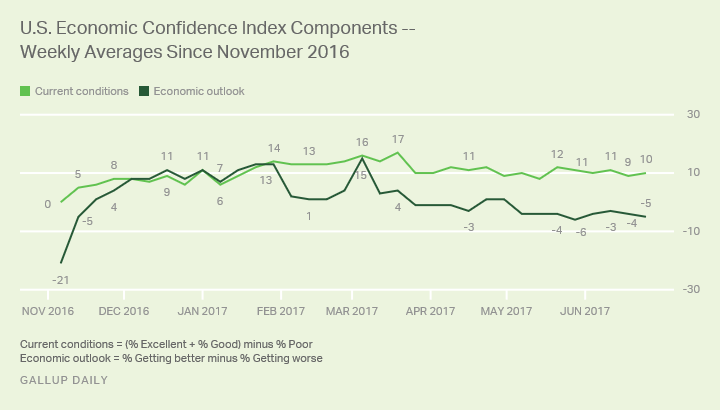
Bottom Line
Americans' confidence in the economy remains stronger now than it was before the presidential election but below the loftier levels it hit earlier this year. After a volatile first quarter, Gallup's U.S. Economic Confidence Index in recent months has been stable in slightly positive territory. This stability comes as the Trump administration pushes forward with several key pieces of its political and economic agenda, including repealing former President Barack Obama's healthcare law and implementing major tax cuts.
While these policies are not particularly popular with the American public, some may believe the policies are good for economic growth -- even if not desirable from other points of view. If so, these policies could strengthen the nation's economic confidence. However, if the policies appear to be bad for the economy, they might eliminate Americans' economic confidence altogether.
These data are available in Gallup Analytics.
Gallup.com reports results from these indexes in daily, weekly and monthly averages and in Gallup.com stories. Complete trend data are always available to view in the following charts:
Daily: Employment, Economic Confidence, Consumer Spending
Weekly: Employment, Economic Confidence, Job Creation, Consumer Spending
Read more about Gallup's economic measures.
View our economic release schedule.
Survey Methods
Results for this Gallup poll are based on telephone interviews conducted June 19-25, 2017, on the Gallup U.S. Daily survey, with a random sample of 3,546 adults, aged 18 and older, living in all 50 U.S. states and the District of Columbia. For results based on the total sample of national adults, the margin of sampling error is ±2 percentage points at the 95% confidence level. All reported margins of sampling error include computed design effects for weighting.
Each sample of national adults includes a minimum quota of 70% cellphone respondents and 30% landline respondents, with additional minimum quotas by time zone within region. Landline and cellular telephone numbers are selected using random-digit-dial methods.
Learn more about how the Gallup U.S. Daily works.
